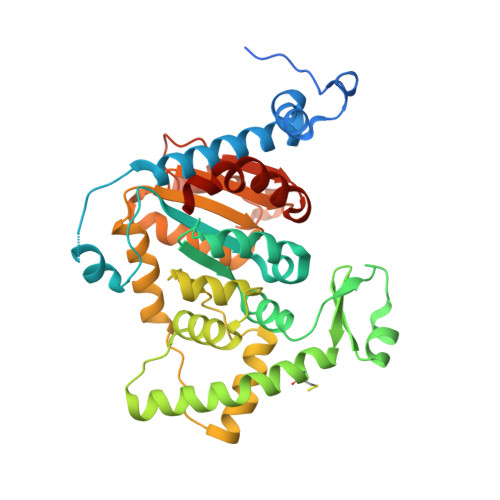Cryo-EM structure of human eIF5A-DHS complex reveals the molecular basis of hypusination-associated neurodegenerative disorders.
Wator, E., Wilk, P., Biela, A., Rawski, M., Zak, K.M., Steinchen, W., Bange, G., Glatt, S., Grudnik, P.(2023) Nat Commun 14: 1698-1698
- PubMed: 36973244
- DOI: https://doi.org/10.1038/s41467-023-37305-2
- Primary Citation of Related Structures:
7A6S, 7A6T, 8A0E, 8A0F, 8A0G - PubMed Abstract:
Hypusination is a unique post-translational modification of the eukaryotic translation factor 5A (eIF5A) that is essential for overcoming ribosome stalling at polyproline sequence stretches. The initial step of hypusination, the formation of deoxyhypusine, is catalyzed by deoxyhypusine synthase (DHS), however, the molecular details of the DHS-mediated reaction remained elusive. Recently, patient-derived variants of DHS and eIF5A have been linked to rare neurodevelopmental disorders. Here, we present the cryo-EM structure of the human eIF5A-DHS complex at 2.8 Å resolution and a crystal structure of DHS trapped in the key reaction transition state. Furthermore, we show that disease-associated DHS variants influence the complex formation and hypusination efficiency. Hence, our work dissects the molecular details of the deoxyhypusine synthesis reaction and reveals how clinically-relevant mutations affect this crucial cellular process.
- Małopolska Centre of Biotechnology, Jagiellonian University, Kraków, Poland.
Organizational Affiliation:




















